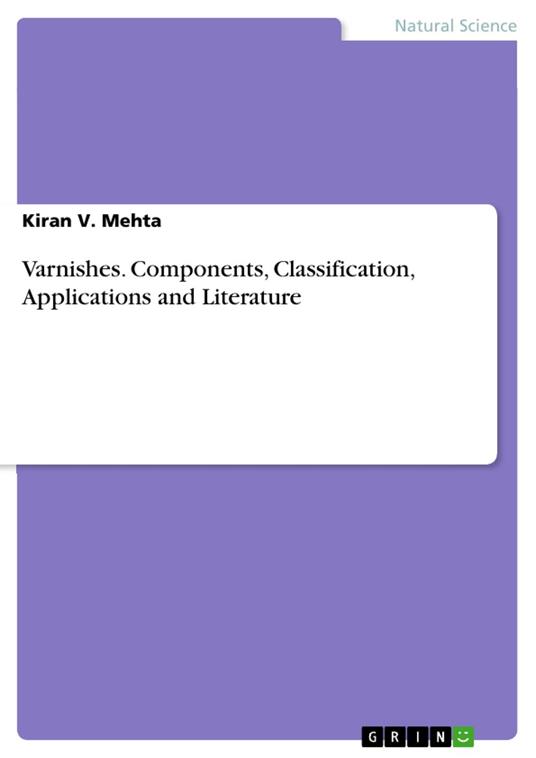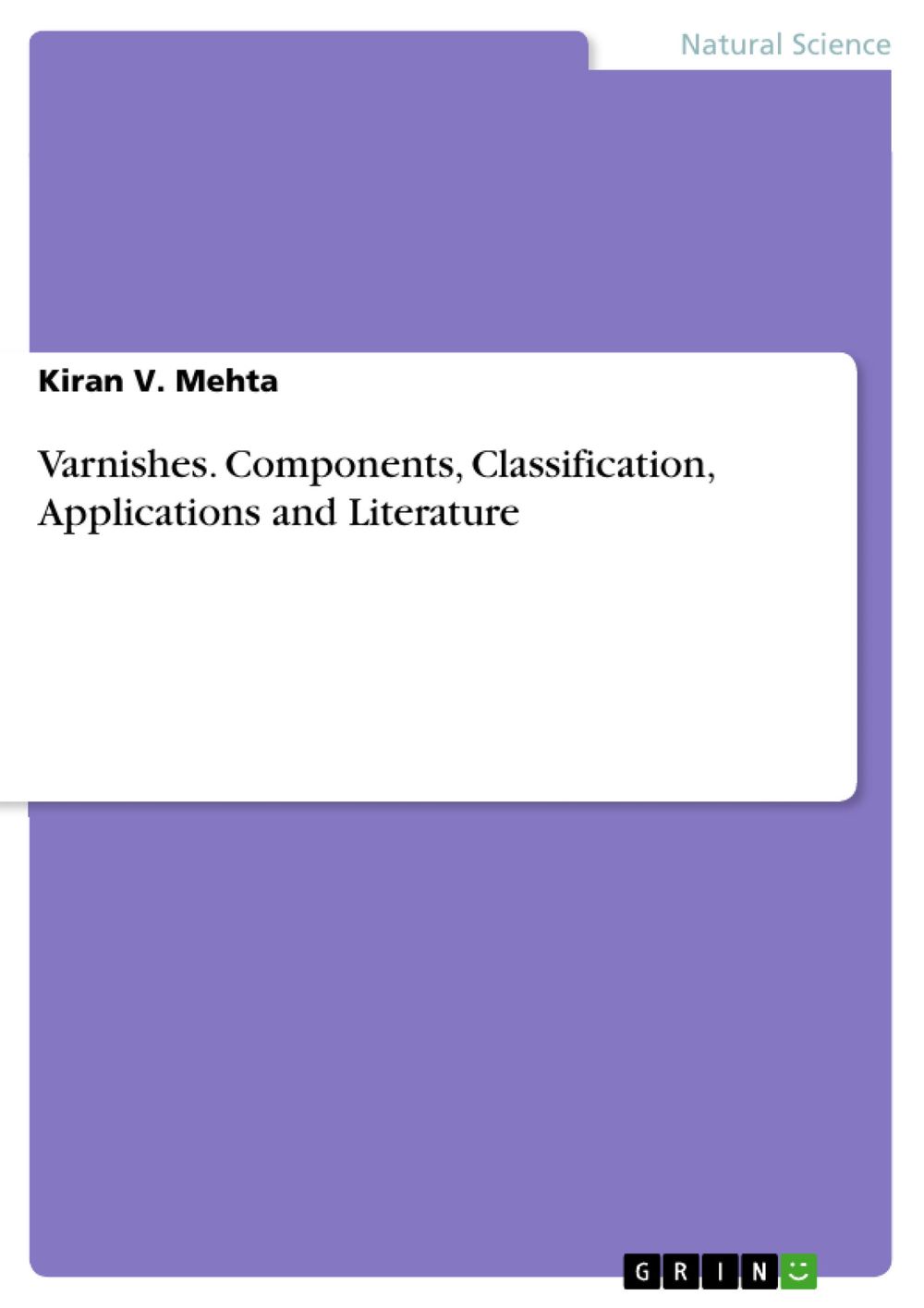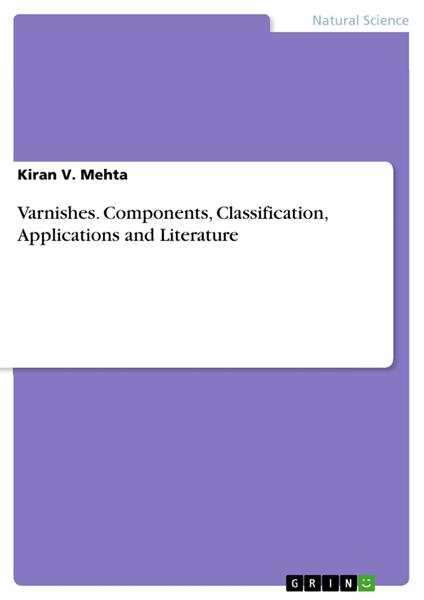Varnishes. Components, Classification, Applications and Literature
Document from the year 2016 in the subject Chemistry - Organic Chemistry, , language: English, abstract: This book presents the fundamentals and most recent scenario of varnishes. Components, classification, characteristics and applications of varnishes are discussed in the book. It is written in comprehensive manner. Wood is valuable for structural purpose and decorative purpose also. Wood has plant origin. The wood used for building construction is known as Timber. Forests produce a huge quantity of timber. Cellulose, Hemicellulose, Lignin and other substances are the constituents of wood. Aliphatic compounds, phenols, fats, waxes, terpenes, terpenoids etc. are found in woods. Stilbenes, Tannins, Flavonoids and Lignanas are phenolic compounds available in woods. Coating of varnishes is useful for wood, metal and their derivatives. It is also useful for plastic and masonry. Varnish is a formulation of resinous matter, as copal or lac, dissolved in oil or in alcohol or any other liquid. When a varnish is applied to the surface of wood or metal, it dries and leaves a hard and generally transparent coating. It is a shiny coating which is applied on a floor or furniture. It dries clear and luminous. It gives a hard, lustrous and transparent finish to the surface. It gives furniture, wooden materials, artwork and other objects a glossy look. It also protects the surface. Usually varnish is prepared from resin, solvent and oil. The Medieval Latin root word for varnish is ‘vernix’ that means odorous or fragrant resin. Some varnishes harden immediately as the solvent evaporates. So, it produces a film. The other varnishes harden slowly over a period of time. The process of hardening involves oxidation and polymerization. Shellac, Resin and Lacquer dry immediately. Acrylic and some of the water based varnishes evaporate the water or solvent and dry over a period of time. It is also known as curing process of varnishes. Oil based, polyurethane and epoxy varnishes also dry slowly to hard finish. Generally, the factors like following affect curing process of a varnish: - Temperature - Humidity of atmosphere - Components of varnish. Wood kept outside is normally exposed to big variations of temperatures and weather. It is also exposed to Ultra Violet(UV) rays in the atmosphere. Changes in humidity also affect the wood which results in contraction or expansion of wood. These all factors damage the wood or wooden articles. Hence, varnishes can be used to protect wood and wooden articles.
-
Autore:
-
Anno edizione:2016
-
Editore:
-
Formato:
-
Testo in Inglese
Formato:
Gli eBook venduti da Feltrinelli.it sono in formato ePub e possono essere protetti da Adobe DRM. In caso di download di un file protetto da DRM si otterrà un file in formato .acs, (Adobe Content Server Message), che dovrà essere aperto tramite Adobe Digital Editions e autorizzato tramite un account Adobe, prima di poter essere letto su pc o trasferito su dispositivi compatibili.
Cloud:
Gli eBook venduti da Feltrinelli.it sono sincronizzati automaticamente su tutti i client di lettura Kobo successivamente all’acquisto. Grazie al Cloud Kobo i progressi di lettura, le note, le evidenziazioni vengono salvati e sincronizzati automaticamente su tutti i dispositivi e le APP di lettura Kobo utilizzati per la lettura.
Clicca qui per sapere come scaricare gli ebook utilizzando un pc con sistema operativo Windows



